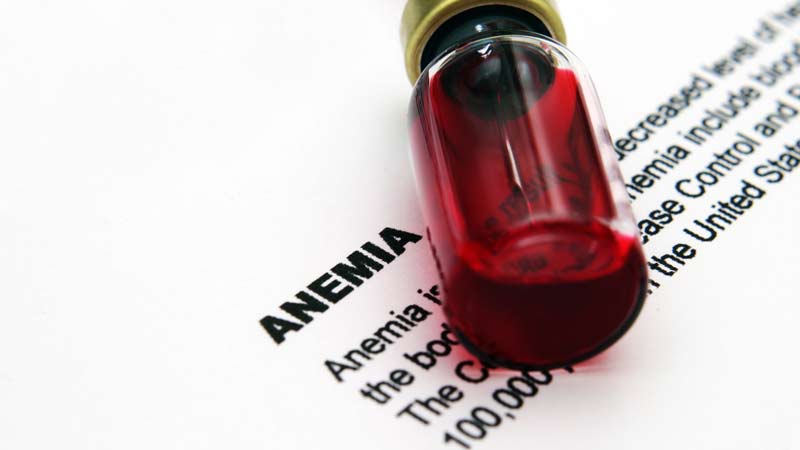
Endurance runners are pressed to sustain rigorous training programs and optimized nutritional strategies to achieve peak levels of performance. These competitive athletes are also at a greater risk for developing anemia, bone mineral density loss (osteopenia), and a weakened immunity due to the prolonged intensity of training loads (Zourdes, Sanchez-Gonzalez, & Mahoney, 2015). All of these negative consequences to the demands of the sport can be traced back to a deficiency in a little-known mineral called iron. Iron is the most abundant trace element in the body, yet most athletes do not eat a sufficient supply through diet alone (Zourdes et al., 2015).
The Physiologic Damage
The body is only able to absorb a fraction of the iron ingested in a given day. The two forms of this element include heme (meat-based) and non-heme (plant-based) sources (Zourdes et al., 2015). The heme form is readily available for absorption whereas the non-heme forms must be reduced from the Fe3+ state to be properly absorbed from the apical surface of the small intestines (Zourdes et al., 2015). Ascorbic acid (Vitamin C) is known to aid in this chemical reduction, thereby increasing iron’s rate of absorption (Zourdes et al., 2015). Vegetarians are uniquely more susceptible to iron deficiency due to the elimination of heme iron from their choice of food.
Iron deficiency can occur through some pathways in the athlete’s hard-working body. With intense exercise comes sweat loss, gastrointestinal blood loss, hematuria (loss through urine, often indicative of kidney damage), exercise-induced hemolysis, and an insufficient diet (Brumitt, McIntosh, & Rutt, 2009). Females are genetically more prone to iron deficiency by virtue of the blood loss associated with the monthly menstrual cycle.
Foot strike hemolysis has been found to be the primary culprit of iron imbalances in distance runners, irrespective of gender (Zourdes et al., 2015). This phenomenon is the result of the impact taken by the feet, mile after mile after mile, owing to significant red blood cell damage in the lower extremities. This exercise-induced hemolysis is a serious consequence of intense training, leaving ruptured red blood cells for clean-up and a subsequent loss of the iron attached to the hemoglobin molecule (Zourdes et al., 2015).
The rate of this hemolysis is directly proportional to the speed and intensity of the workout, and less correlated to running surface than previously proposed (Zourdes et al., 2015). As running speed increases, ground reactive forces amplify, causing the body to absorb greater vertical impact through the foot and upwards (Peeling et al., 2009). The contractile forces of the major muscle groups have been found to accelerate this hemolysis by compressing the local capillary networks (Peeling et al., 2009).
The Immune Response
After the integrity of the red blood cell is compromised, it must be sacrificed and disposed of, leaving discharged hemoglobin and iron to be swept into the plasma (Peeling et al., 2009). If left unattended, the free-floating hemoglobin can cause oxidative tissue damage, which will slow recovery time dramatically in the athlete, hence causing such fatigue and weakness (Peeling et al., 2009). One study found that a 60-minute effort at 75% of peak VO2 resulted in a four-fold increase in hemoglobin levels when compared to the same effort in cycling (Peeling et al., 2009).
Inflammation is a side effect common to most intense runs. IL-6 is an inflammatory mediator in the body that responds to both intensive exercise stress and subsequent oxidative tissue damage (Yanovich et al., 2011). When IL-6 upregulates, it induces osteoclast activity, or the breakdown of bone minerals with the intent to rebuild. However, IL-6 also activates hepcidin, a small molecule that promotes iron deficiency by blocking its absorption in the duodenum (Yanovich et al., 2011). Iron-deficient bone cannot rebuild itself properly, leaving the athlete in a state of weakened bone mineral density and vulnerable to stress fractures if the deficiency is not overcome. Animal studies have also shown how iron deficiency impairs the bone resorption (rebuilding) process (Yanovich et al., 2011).
The Consequence
Anemia is defined as an insufficient amount of healthy red blood cells in circulation, and it is frequently associated with iron-deficiency (Brittenham, 2012). A potential source of the anemia may be blood loss from the gastrointestinal and urinary tract after intense exercise as mentioned earlier; this is a result of transient ischemia from the vasoconstriction of splanchnic (GI) and renal vessels during exercise (Yanovich et al., 2011). The maximum amount of oxygen that can be carried in the blood is determined by the amount of the oxygen-carrying protein, hemoglobin, present in the blood. Iron is an essential component of hemoglobin, and so an iron deficiency places a greater demand on the cardiovascular system due to the reduced oxygen-carrying capacity of the red blood cells.
Athletes are more at risk for iron-deficiency than the general population, with female endurance athletes being in the greatest danger. Common symptoms include fatigue, irritability, moodiness, headaches, and impaired concentration, potentially worsening to lightheadedness upon standing, pica (non-food cravings, such as ice), brittle nails, sore tongue, and shortness of breath (Brittenham, 2012). Coaches witnessing a lack of energy, apathy, or weakness should suspect a mineral deficiency (Brumitt et al., 2009).
Iron deficiency is medically defined as a serum ferritin level less than 10-12ng/mL. Iron deficiency can progress through three stages, with the first being a significant decrease in serum ferritin, but no change in hemoglobin levels (Brumitt et al., 2009). This is a miss for most doctors who only check the hemoglobin and hematocrit in a standard CBC. The second stage is indicated by a decrease in stored iron, serum iron, and transferrin saturation, as well as an increased total iron binding capacity (Brumitt et al., 2009). The third stage is when the athlete becomes anemic and continual top-level performance will be insufferably difficult for an athlete who fights the deficiency.
The root of the issue may be nothing more than an insufficiently iron-supplemented diet to compensate for the training-induced damage, and this should not be overlooked when developing nutritional strategies for these athletes. Iron-supplementation with ferrous sulfate or ferrous bisglycinate is highly recommended, especially for female endurance athletes, and correction of this deficiency can lead to enhanced performance and health status. A compromised aerobic capacity has no place in the top tiers of running performance.
Please share this article so others may benefit.
[mashshare]References
Brittenham, G. M. (2012, Ch. 34). Disorders of iron homeostasis: iron deficiency and overload. Hematology: Basic Principles and Practice (6th ed), Philadelphia, Pa: Elsevier Saunders.
Brumitt, J., McIntosh, L., & Rutt, R. (2009). Comprehensive sports medicine treatment of an athlete who runs cross-country and is iron deficient. North American Journal of Sports Physical Therapy, 4(1), 13-19.
Peeling, P., Dawson, B., Goodman, C., Landers, G., Wiegerinck, E. T., Swinkels, D. W., & Trinder, D. (2009). Training surface and intensity: Inflammation, hemolysis, & hepcidin expression. Medicine & Science in Sports & Exercise, 41(5), 1138-1145.
Yanovich, R., Merkel, D., Israeli, E., Evans, R. K., Erlich, T., and Moran, D.S. (2011). Anemia, iron deficiency, and stress fractures in female combatants during 16 months. Journal of Strength & Conditioning Research, 25(12), 3412–3421.
Zourdos, M. C., Sanchez-Gonzalez, M. A., & Mahoney, S. E. (2015). A brief review: The implications of iron supplementation for marathon runners on health and performance. Journal of Strength and Conditioning Research, 29(2), 559-565.


